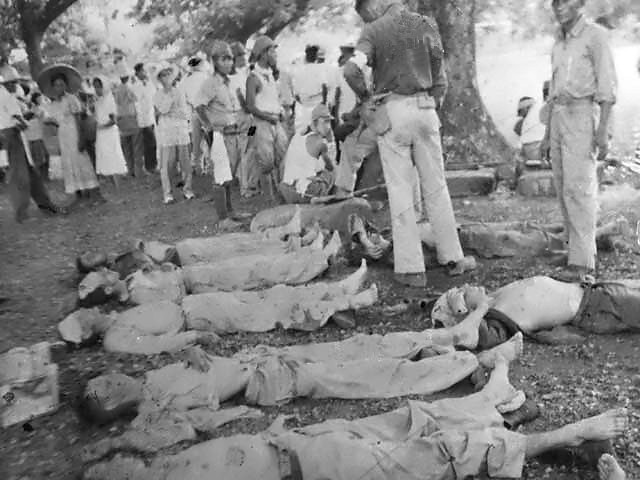Oldest survivor of Bataan Death March dies at 105
ST. LOUIS, Missouri—A doctor once told Albert Brown he shouldn’t expect to make it to 50, given the toll taken by his years in a Japanese labor camp during World War II and the infamous, often-deadly march that got him there. But the former dentist made it to 105, embodying the power of a positive spirit in the face of inordinate odds.
“Doc” Brown was nearly 40 in 1942 when he endured the Bataan Death March, a harrowing 65-mile trek in which 78,000 prisoners of war were forced to walk from Bataan province near Manila to a Japanese POW camp. As many as 11,000 died along the way. Many were denied food, water and medical care, and those who stumbled or fell during the scorching journey through Philippine jungles were stabbed, shot or beheaded.
But Brown survived and secretly documented it all, using a nub of a pencil to scrawl details into a tiny tablet he concealed in the lining of his canvas bag. He often wondered why captives so much younger and stronger perished, while he went on.
By the time he died Sunday at a nursing home in southern Illinois’ Nashville, Brown’s story was well-chronicled, by one author’s account offering an encouraging road map for veterans recovering from their own wounds in many wars.
“Doc’s story had as much relevance for today’s wounded warriors as it did for the veterans of his own era,” said Kevin Moore, co-author of the recently released “Forsaken Heroes of the Pacific War: One Man’s True Story,” which details Brown’s experience.
“The underlying message for today’s returning veterans is that there’s hope, not to give in no matter how bleak the moment may seem,” added Moore, whose nephew just returned from military duty in Afghanistan. “You will persevere and can find the promise of a new tomorrow, much like Doc had found.”
Brown, recognized in 2007 at an annual convention of Bataan survivors as the oldest one still living, couldn’t muster the strength to talk about his experiences until about 15 or so years ago, said his granddaughter, Susan Engelhardt of Pinckneyville, Illinois.
“I’m not a big military buff at all. But just reading the story about the death march and the situation in the Philippines, it’s an incredible story. And incredibly sad,” Engelhardt said. “He’s an incredible man, and he had an incredible legacy. He came through horrible times and came out on top, rebuilding his life. But so many of those men and women triumphed.”
Brown’s account described the torment that came about every mile as the marchers passed wells US troops dug for natives but weren’t allowed to drink from once they became prisoners. Filipinos who tried to throw fruit to the marchers frequently were killed.
Brown remained in a POW camp from early 1942 until mid-September 1945, living solely on rice. The once-athletic man — he lettered in baseball, football, basketball and track in high school — saw his weight whither by some 80 pounds to less than 100 by the time he was freed. Lice and disease were rampant.
Despite the hardships, Brown focused on bright spots, including a prisoner called on to fix Japanese soldiers’ radios. The prisoner managed to steal radio parts, scraping together enough components to build a functioning unit of his own. Brown helped craft a listening tube for the device, which brought the captives news from San Francisco that the US actually had won a battle the Japanese soldiers were celebrating as a naval victory.
“He had this incredible spirit to live and overcome,” Moore said. “Positive thinking or whatever you call it, he survived.”
Born in 1905 in North Platte, Nebraska, Brown was the godson of Wild West folk hero “Buffalo Bill” Cody, who often let the boy sit on his lap and tug his beard. Brown moved with his family to Council Bluffs, Iowa, after his father — a railroad engineer — died when a locomotive engine exploded.
He studied dentistry at Creighton University in the 1920s and was called to active duty in 1937, leaving behind a wife, children and a decade-old dental practice his war injuries prevented him from resuming.
By the time the war ended in 1945, the 40-year-old Brown was nearly blind, had weathered a broken back and neck and suffered through more than a dozen diseases including malaria, dysentery and dengue fever.
He took two years to mend, and a doctor told him to enjoy the next few years because he had been so decimated he would be dead by 50. But Brown soldiered on, moving to California, attending college again and renting out properties to the era’s biggest Hollywood stars, including Joan Fontaine and Olivia de Havilland. He became friends with John Wayne and Roy Rogers, doing some screen tests along the way.
“I think he had seen so much horror that after the way, he was determined to enjoy his life,” Moore said.

